Chris McGrath is a renewable energy engineer and inventor who is co-founder and chief executive of 5B. The Sydney-based company is known for its proprietary Maverick design and installation system that enables solar panels to be deployed on the ground three times faster, and deliver twice the energy output, compared to their conventional competitors. 5B is the technology provider for the Tennant Creek solar farm component a $20 billion project led by Sun Cable, which is building the world’s largest solar powered infrastructure system in northern Australia to deliver power to Singapore.
Paddy Manning is an investigative journalist, contributing editor of The Monthly and author of Body Count: How Climate Change is Killing Us. Over two decades in journalism he has reported extensively on climate change, including for The Monthly, ABC RN’s Background Briefing, Crikey, SMH/The Age, Australian Financial Review and The Australian. He was the founding publishing editor of Ethical Investor magazine. Manning has written six books, including a forthcoming biography of Lachlan Murdoch, and is currently undertaking a doctorate with the Centre for Media History at Macquarie University, on ‘A Century of News Corporation in Australia’.
Solar industry veterans Chris McGrath and Edan Tehan founded 5B in 2013 to create a system to deploy solar farms faster and use land more efficiently. Their technology will soon be rolled out by the ambitious Sun Cable project, a massive solar installation that will send electricity via an underwater cable from the Northern Territory to Singapore. 5B has committed to create green supply chains and bring manufacturing jobs to the NT.
I don’t think anyone would refute the value in the opportunity that Australia could become a renewable energy export superpower and we can revitalise manufacturing and industry and supply the world with sunshine.
– Chris McGrath
The two light bulb moments for us, one was how to prefabricate, and the other was how to use solar modules in an easier, lighter, leaner, more cost-effective way.
– Chris McGrath
…spending time in a paddock in western New South Wales gives you time to think. I’d been pondering a lot while out there and then suddenly the thing collided in my mind and I could see what we now built, years later…
– Chris McGrath
My primary motivation is that sustainability is humans learning how to do what we do better and actually unlocking our potential to use our intelligence to live harmoniously with each other and our environment with the time and resources we have.
– Chris McGrath
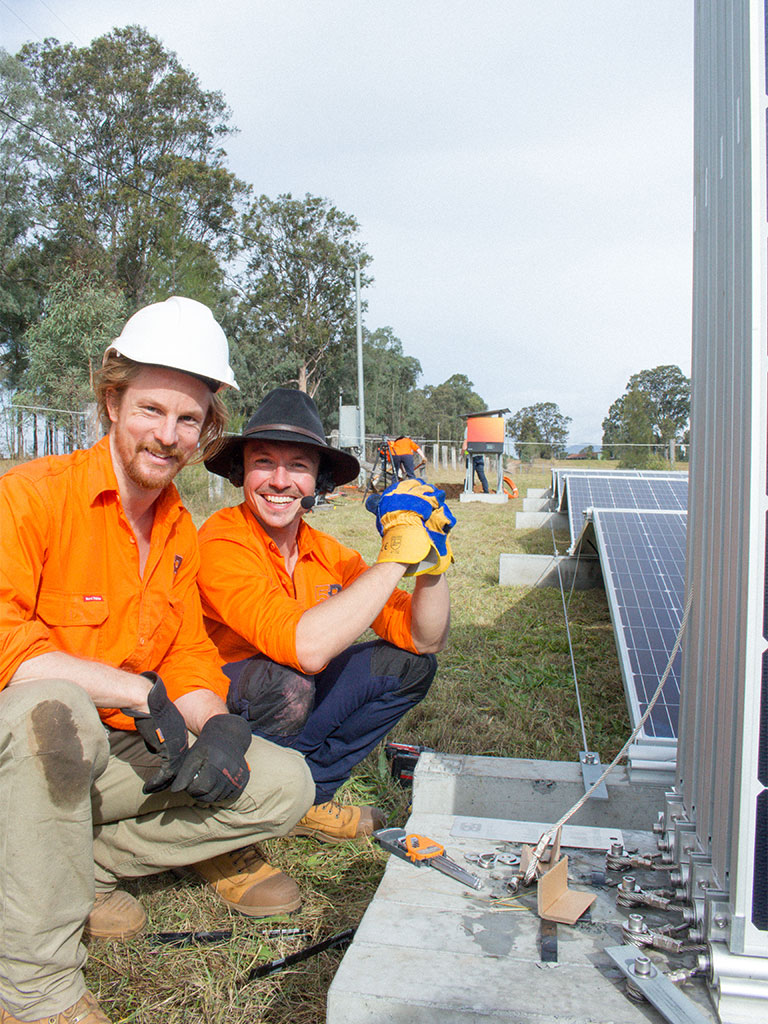
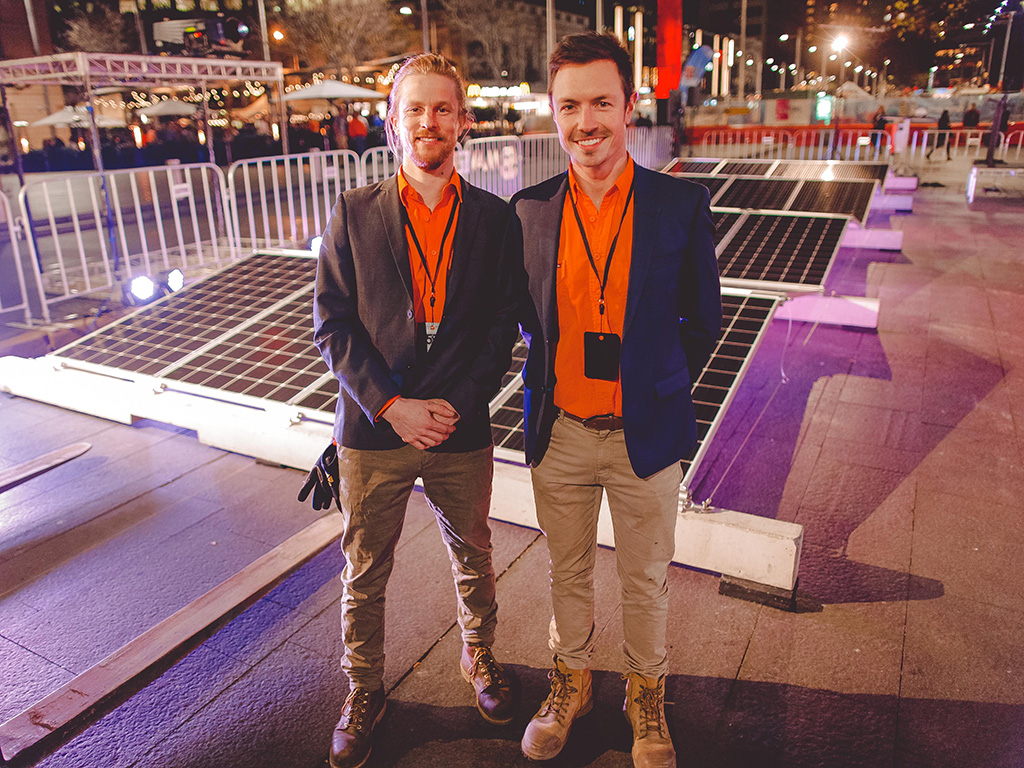
… every industrial revolution has been underpinned by some form of energy transformation. We’re seeing this revolution happen right now and it has been driven by an abundance of ultra- low-cost, massive scale, clean electricity.
– Chris McGrath
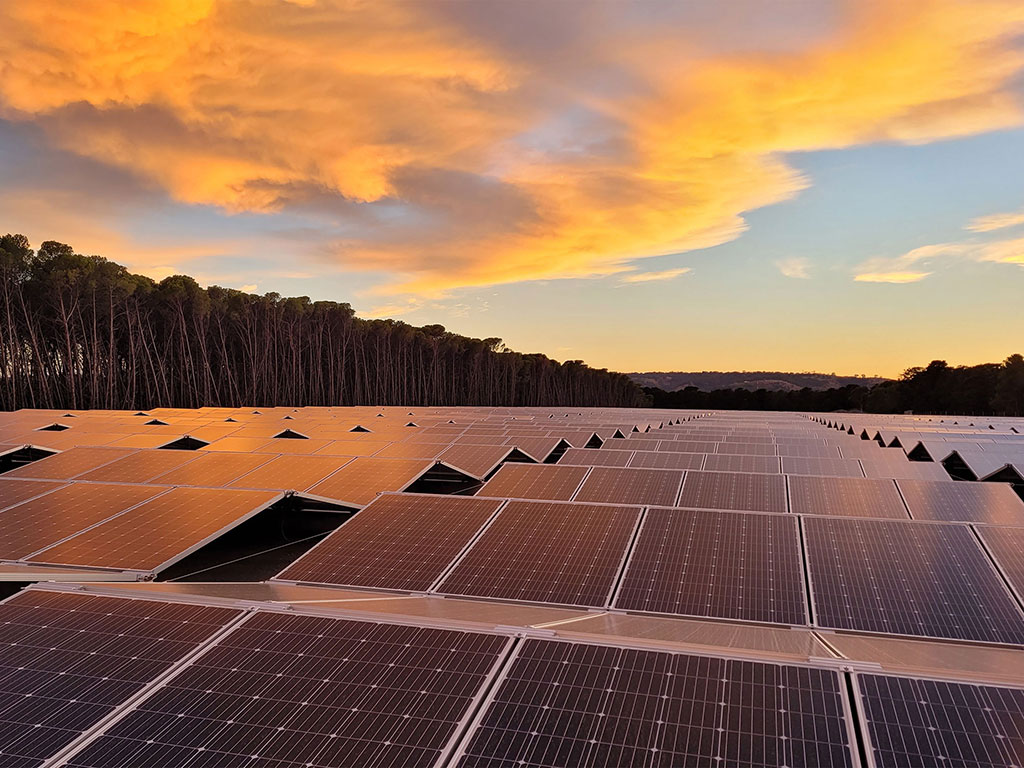
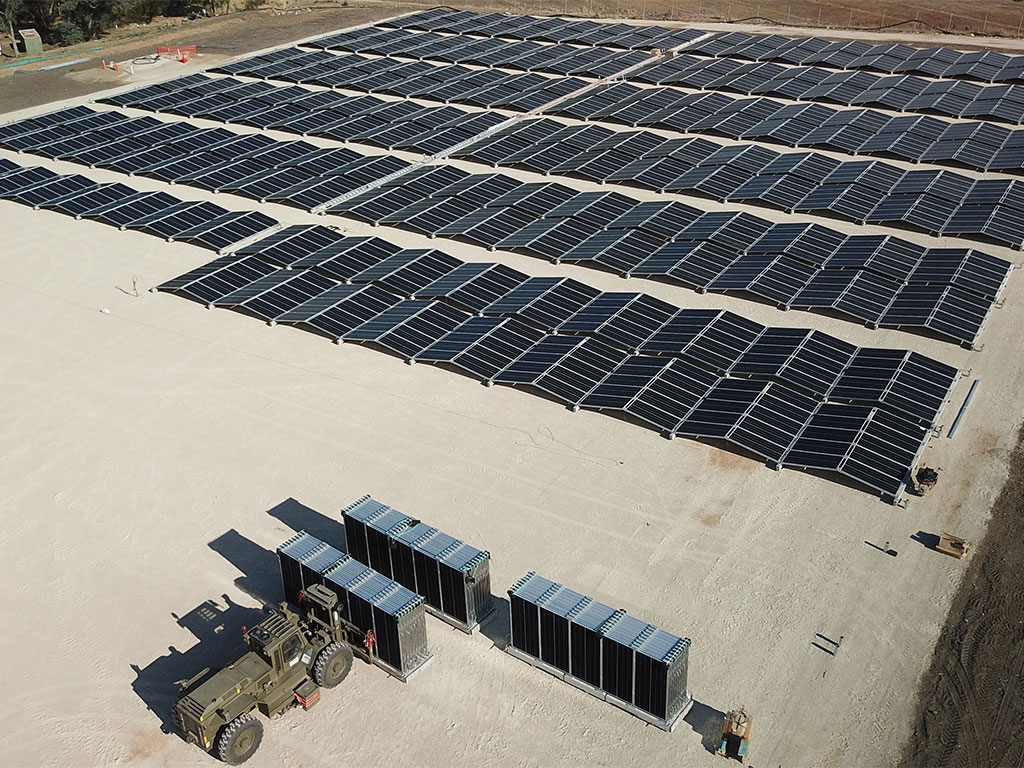
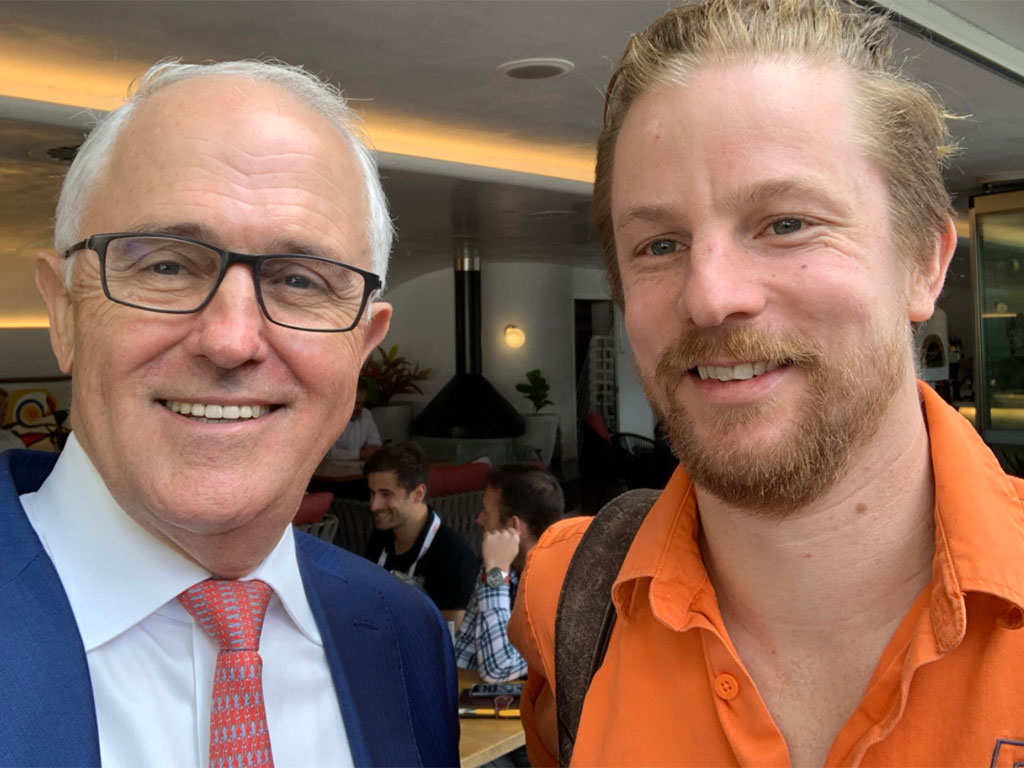
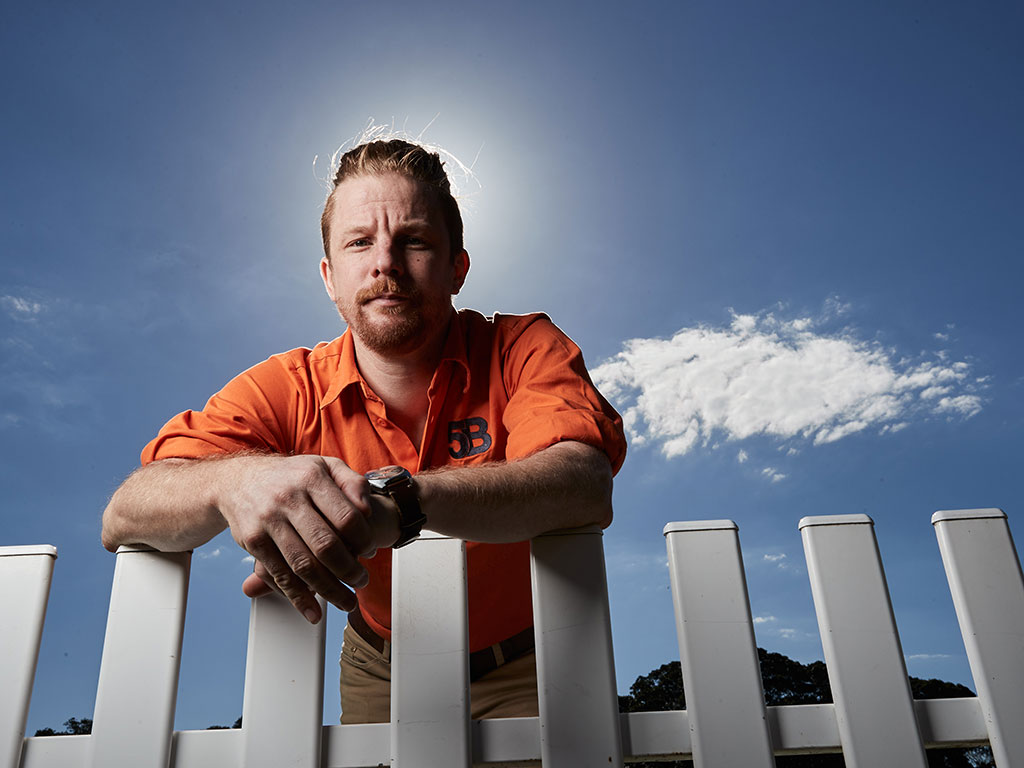
I don’t think anyone would refute the value in the opportunity that Australia could become a renewable energy export superpower and we can revitalise manufacturing and industry and supply the world with sunshine.
– Chris McGrath
The series presents 100 visionary Australians that are taking positive action to respond to the most critical issue of our time, which is climate change. We’re broadcasting today in the Boiler Hall of the Powerhouse museum. Before it was home to the museum, it was the Ultimo Power Station. Built in 1899, it supplied coal powered electricity to Sydney’s tram system into the 1960s. If you look around, the whole unique industrial features remain, including the imposing chimneys you entered between and the coal cart rail tracks that run underneath this stage. In the context of this architectural artefact, we shift our focus forward to the innovations of the net zero revolution.
On behalf of the Powerhouse, I’d like to acknowledge the Traditional Custodians of the ancestral homelands on which the museums are situated. We respect their Elders past, present and future and recognise their continuous connection to Country. My name’s Paddy Manning. Now to introduce my guest, Chris McGrath. Chris is a renewable energy engineer and inventor who is co-founder and chief executive of 5B. We’re so thrilled to have him join us today. Welcome, Chris.
Why 5B? What does it mean?
We spent the first four weeks of 5B finding the name for the business, which is the most important thing to do I think when you start a company. 5B means five billion years, which at the time was the number of years forecast before the Sun would self-implode. We describe it as a challenge and the opportunity. It’s both the challenge to live out, for humans to learn to live sustainably for our total potential existence. That’s the gift, is that time. And it’s also the source of all life on Earth and could be the form – the source of most energy on Earth. And therefore, it’s the solution to that challenge as well.
Before we get too deep into this conversation, can you please explain what is 5B and who or what is the Maverick?
So 5B is a clean tech innovation business and Maverick is our flagship product. Maverick is our solution to make solar as low cost, fast and easy as it as it can and should be. Maverick is essentially a prefabricated productised version of the solar farm, so it allows us to build projects really quickly. We’re turbocharging solar farm construction with factories.
We’ve been really wrestling with the challenge of how to build more solar, faster, how to make it easier, how to make it cheaper. In the Australian environment, for us, that meant remote locations, really harsh conditions, high labour costs – particularly on construction sites – and prefabrication is a really obvious answer to that. We could see that actually the challenge was shifting from not just how do you make the solar module more powerful, more efficient and lower cost, but how do you get that from the factories into the field and operating in the lowest cost, fastest way.
It was actually more about how do we really turbocharge and streamline and accelerate the deployment? We’ve been really blessed, I guess, in building on the last kind of like 30, 40 years of R and D and industry in the solar module space. And then we’re kind of picking that up and running with it in terms of turning that into the next phase of the challenge.
But I think it started for you on a farm, didn’t it?
Like the actual moment is still a moment that I can remember viscerally. And it was – having travelled around the country at the time I was working at Infigen Energy, developing some of the country’s first large-scale solar farms and we’re travelling into some really remote locations. We were seeing prefabrication being used in mining industry and in building demountables, et cetera.
And we were wrestling with our construction costing that was coming back in and it was too high and we needed to be competitive, we wanted to build more. And then we were out at a property in Nyngan, western New South Wales, and playing around with some solar monitoring equipment – it had broken and we needed to go and fix it.
We were pulling some bits off and we ended up with a couple of solar panels kind of leant up against the farm fence – and this is kind of on the edge of a hundred-hectare property of a solar farm to be, a total greenfield site in the sense that it was pasture as a cattle paddock. It didn’t have any solar infrastructure on it yet and something kind of triggered in my mind, which was seeing these two panels leaning up against a fence.
The two light bulb moments for us, one was how to prefabricate, and the other was how to use solar modules in an easier, lighter, leaner, more cost-effective way.
– Chris McGrath
Almost like in an A-shape.
Exactly. And the prefabrication concept had been like – spending time in a paddock in western New South Wales kind of gives you time to think, so I’d been pondering a lot while I’d been out there and then suddenly the thing just kind of collided in my mind and I could see, like what we now build years later, I could see just like rolling out across the site on a hundred hectares. And I then called Eden, my colleague at the time and my now co-founder and business partner and spent the next eight hours driving back to Sydney, talking to him, didn’t sleep for three days, left our corporate jobs, started 5B and here we are eight years later.
There’s a fantastic little one minute video on your website where you see these concertinaed panels just being pulled out. And to me, when I saw it, it seemed intuitively obvious that that’s the way solar should always have been rolled out. It all works so that you can land a container anywhere in the world and unfold these pre-packed concertinaed solar panels in – I think you’re aiming to break a land speed record, aren’t you? What is the record for rolling out solar?
Yeah, we kind of invented our own class of record in describing this as like a solar land speed record and I think we hold it at the moment. I mean, at the moment,we deploy about a megawatt a day with three people and a forklift. We’ve broken that record since, actually. And that’s really fast, like that’s probably about five times faster on a per megawatt, per day basis than conventional approaches in the industry. We can then either build projects faster, or we can build projects with less people or a combination thereof.
…spending time in a paddock in western New South Wales gives you time to think. I’d been pondering a lot while out there and then suddenly the thing collided in my mind and I could see what we now built, years later…
– Chris McGrath
Can we go right back to the beginning? When did you first acknowledge or realise or recognise climate change was going to be a problem and decide that you wanted to focus on that in your career? Was there a moment?
My primary motivation is that sustainability is humans learning how to do what we do better and actually unlocking our potential to use our intelligence to live harmoniously with each other and our environment with the time and resources we have.
– Chris McGrath
My mum, in her wisdom, slipped in a renewable energy engineering brochure, like under all the piles of stuff on my desk and allowed me to find it and bring it back to her and say, ‘Mum, look what I found. It’s renewable energy, I think it’s super cool’. And for me, it’s kind of like this combination between power systems, which are big and fast and loud and powerful, and also sustainability. You’ve kind of got to hack the system to get that outcome in a sustainable way.
I wouldn’t describe myself as a greenie now, I think environmental sustainability and ecology is super important, but my primary motivation is that sustainability is humans learning how to do what we can do better and really actually unlocking our potential to use our intelligence to live harmoniously with each other and our environment and with the time and the resources we have as well.
You mentioned earlier your co-founder, Eden Tehan. You’ve had a career-long partnership. Can you tell us how you met him, how you saw eye-to-eye, what attracted you both, I think, to Engineers Without Borders and how you ended up in Vanuatu?
Eden has been a friend and then a close friend and then a colleague and then a housemate and then a university thesis project partner and then a colleague at Infigen and an adventure companion and now co-founder of 5B with me for the last eight years, which is a pretty wild ride. We talk about being business husbands. You develop a very interesting relationship with someone I think when you’re working so closely with them, hand in glove every day and you’re facing so many challenges.
It’s a real relationship, you’re really being tested and you’re being forced to communicate and find compromise and you’re just facing challenges on the outside world and on the inside world every day. I think it’s also the compliment in the relationship’s really strong, like I’m a dreamer and Eden’s a doer, and he cuts through and hustles and grounds me in reality, at times. It’s an awesome relationship and it’s been tried and tested, I guess now over a number of years as well.
The Vanuatu project was a great example. That was our undergrad thesis, we did that with UNSW. It was a bit of an unusual thesis instead of like researching a topic, we just did something. And what that thing was, was micro-hydro project for a remote community on this remote island in Vanuatu. And it was incredibly challenging, but we also just had an incredible experience, hanging out in a community there for weeks, a number of times over a number of years. And the combination between like the engineering challenge and the execution of it, but also like the personal and social side of that stuff, is super, super engaging.
The university has got an ongoing project there and interestingly actually like, as technology trends change – back in, that was in 2008 – and at that time, solar PV was still quite expensive. Hydro was, and still is, a very powerful technology. 24/7 they had this stream that just had an ample amount of water flowing down right up into the mountains. Incredible locations, it’s like volcanic island and we’re hiking up into the mountains, like dragging pipes up the hill with the community there and using that to harness the power for the community.
But it got wiped out by the cyclone and then when it needed to be replaced, solar PV actually was just cheaper and also simpler and less vulnerable to those kind of events. So it was interesting to kind of see that evolution in that project.

It’s sort of reflected in the culture when I came to visit you out at your new campus at Mascot in Sydney. The culture of the place feels kind of freewheeling, it feels kind of friendly. It’s kind of like a startup environment.
I guess the more recent years of 5B, but that to us is all about enjoying the ride and the freedom and the creativity that comes from that is super critical. And we’ve kind of always, I guess, enjoyed working in that way.
You go from university, together as I understand, you go with Eden, you go from university to Infigen, that was one of the first serious wind farm developers in Australia. What was that experience like?
I still remember my first manager there, David Griffin, who’s the CEO and co-founder of Sun Cable. He hired me and I still remember like showing up to my interview and I thought that I had convinced him that I knew what wind farm development was. And he was fascinated with the story about Vanuatu and how I’d been this university kid managing a community and this project and finding funding and stuff.
And I think that’s kind of what grabbed him about me and I turned up to my first day of work and he sat me down and said, ‘You don’t know anything about wind farm development do you? You don’t really know what this role is about’. And I agreed, I confessed. And he said, ‘It’s okay, I know why I hired you and I’ll teach you’. And that was kind of the start of a long relationship that we’ve had.
I describe him as a mentor and he’s taught me a huge amount about the commercial business world. He learnt how to develop wind farms from the ground up. He has this awesome story about they were trying to develop carbon farming initiatives back in the early 2000s and their investors were saying, ‘We want something more tangible’. So they went home, read all about wind farming on the Danish Wind Society website, woke up the next morning and became wind farm developers.
Those kind of stories for me and like his ability just to do it was a really, really big, I guess, like maybe not an inspiration, but like it an enabler for me to just like see that that’s possible. I still remember sitting in the boardroom at Infigen and I’d been there for a month or two working on wind farm projects and everyone was super excited. We had some celebrations and then someone said like, ‘But does anyone here actually know solar?’ And David – everyone’s a bit quieter – and then David was like, ‘Chris, you did solar, didn’t you?’ And then that was that’s kind of how I started my career in solar.
So you have your light bulb moment out at the farm at Nyngan. You take the idea, as I understand to Infigen and say, ‘Do want to develop this?’ What do they say?

In our naivety, in our optimism, we had an idea and we wanted to grow it and we loved working with Infigen, it was an incredible place to work. So, the natural answer was, well let’s do that there where we work, let’s combine the best of both worlds. And we received some advice at the time that was along the lines of, ‘I think you need to go and form your own business and do it yourself’. And it hadn’t really occurred to us that we could do that.
I always imagined that I might start a business one day, or I might do my own thing one day, but at that time I wasn’t thinking, like I really want to start a company. I wasn’t, I’ve never been really allured by, like the startup vibe. I actually really don’t like the word startup. It has funny connotations to me in a very, like, kind of temporary, impermanent kind of way.
But that advice kind of triggered us to think, how would we do this? Could we do it? And we had the idea that felt – it was burning a hole in our brain as well, it wasn’t really an option to us to not do it. It was really just a question of how we did it and then we just needed to kind of find that path. We bootstrapped the business from the ground up.
We were granted, from a friend, a corner of a sand quarry that became just a little bit of spare space that became our prototyping site. We fitted out a 40-foot shipping container into a workshop down there. Our office was a spare bedroom in my house, that we were renting. I ended up like living in the bedroom and working out of the same room for a while for – some other story there. Our first prototype was like, in our backyard. We’d built this prototype just out of solar panels and some garden stakes, that was like the very first prototype.
I think we had this interesting kind of mentality at the time, was that there was value in the idea itself that we needed to protect before we were ready to launch. What we now understand is that of course, there’s value in the idea. It’s where you start from, but it’s actually the execution of that that’s actually really hard and that’s what creates the value. Like, you need the idea, that’s the buy-in and the starting point, but it’s how you actually then turn that into something.
5B is the technology partner for the Tennant Creek solar farm, component of a $20 billion project led by Sun Cable, which is building the world’s largest solar powered infrastructure system in Northern Australia to deliver power to Singapore. To me, one of the things that’s inspiring about Sun Cable is the idea that it shows that renewable energy can be exported and an export earner for Australia. We feel sort of dependent on mining and agriculture to pay our way in the world, but this could be, this points the way to a very different future beyond fossil fuels.
… every industrial revolution has been underpinned by some form of energy transformation. We’re seeing this revolution happen right now and it has been driven by an abundance of ultra- low-cost, massive scale, clean electricity.
– Chris McGrath
We see it as a real lighthouse project. They were the first large gigawatt-scale project that was really gaining a head of steam. They are the biggest at a time in the first one to really start to become tangible. It is this amazing lighthouse, I think, to show the industry and the world how it could happen, what it could be, and also to get people moving on the challenge, because it’s not easy.
It’s a really big project and it’s sufficiently terrifying and we have people staring at it every hour, every day, working out how to do it, what are the challenges. It’s all possible, but it requires a lot of thought and planning, so bringing those projects to life in a way that kind of forces action is a super, super catalytic kind of event. Energy has underpinned development of the world since ever.
Every industrial revolution has been underpinned by some form of energy transformation. We’re seeing this revolution happen right now and it is being driven by an abundance of ultra-low cost, massive scale, clean electricity. And that’s a massive paradigm shift from the way the industry has developed around low-cost energy. But now there’s this paradigm shift to being that, well actually you can do it cheap with solar and you can deploy it at scale

How did you get involved with Sun Cable?
It was actually the relationship with David Griffin, so he, as I was mentioning earlier, he was my first boss and a mentor. He’s a seed investor in 5B. I’ll be poking David for, until the end of time, as to whether he invested in us to be able to build Sun Cable or whether what we were doing really helped highlight how cheap and fast solar could get, and therefore, showed how Sun Cable could exist. I think it’s a combination of both, David’s had some ideas for a long time about huge energy projects and transformative ways to do energy and now we have this awesome collaboration developing the tech that will be the platform for them to build the most outrageously large project.
It could be the rebirth of manufacturing in Australia, couldn’t it? We’ve got this endless cheap power.
And it’s playing to our strengths. We have space, we have sunshine – without stating the obvious. We have vast amounts of resources, we have the technology to do it and rather than just digging stuff out of the ground and exporting it and having someone else burn it or us burn it ourselves, we can actually really like redefine the way that we use that nexus between technology, space, energy, resources, et cetera.
The defining challenge in this space is, it’s not whether you’re a big, sunny country that has space, like that’s not unique in the world, but solar and wind is far more widespread. And it’s not saying everyone has the same opportunities, but the number of countries that could become the new hydrogen superpower is like, more than one, but it’s the challenge of just getting in there and doing it first. I think that’s where Australia has this huge opportunity, but we won’t unlock it and realise that if we don’t actually really act on it.
I suppose most households would be familiar with the concept of rooftop solar panels generally measured in a capacity of kilowatts. Most of your commercial and industrial installations that I understand in Australia at the moment, they’re measured in megawatts. You’re talking, when you talk about Sun Cable, you’re talking about rolling out gigawatts. But there’s an even bigger number isn’t there of terawatts that we need to build. So can you kind of explain that scale?

I can try. I mean, fortunately we use the metric system which helps and they’re all orders of thousands apart from each other. An average house rooftop system would be in the order of like one to five kilowatts. We build like kind of rural or agricultural farm-based systems, it might be like tens of kilowatts, up to maybe 100 kilowatts or so. That’s a project that’s kind of in the order of like maybe 30 by 30 metres.
And then we build some, what we call commercial industrial projects, so kind of one to 10 megawatts and roughly, like a rough number would be one hectare per megawatt, for us, we’re much more land dense than conventional solutions. So we use less land than others, but that’s kind of our number. And a one to 10 megawatt project is like – we’ve got some awesome photos on our website, one of my favourite photos is a couple of megawatt solar farm in the backdrop of this like huge gold-mine pit in Western Australia. And it’s just this awesome visual of like mining and solar and the red dirt and the bush in the background.
So that kind of sized project is like, it’s a few million dollars that powers a facility and then like large utility-scale solar farms, like what Australia would call large-scale would be in the order of like 50 to a few hundred megawatts, roughly a million dollars per megawatt is another metric. And then Sun Cable are building the world’s largest solar farm, their project, it’s crept up from 10 gigawatts now up to about 20 or so and that’s their stage one as well. For context, like a coal power station would be like one to two gigawatts. So they’re building something that’s in the order of like 10 times an average coal power station.
Terawatts is what we’re about and it’s kind of cool because like, when we started in the industry, it was about megawatts and not gigawatts and then gigawatts started to become a bit more thrown around and terawatts is now something that like – we’ve just gone on a big roadshow for an investment round, Australia, US, Europe virtually. And we stand up in front of very serious investors and we say the world needs to build 40 to 80 terawatts in the next three years. And that’s heard and accepted, and that’s a pretty wild number, it’s entirely necessary.
And how much of we built so far?
0.75
So in all of history we’ve built 0.75. By 2050, we need to build somewhere between 40 and 80 terawatts?

I think the number’s actually 80. It’s an eye-wateringly large challenge and need, but it’s also entirely possible, if we get our skates on.
The war in Ukraine right now, I mean, that is putting pressure on. There is a geopolitical element to this, isn’t there and it is putting pressure on countries to get themselves quickly off Russian oil and gas? It’s not a very big step from there to getting off oil and gas completely. Maybe that gives new, fresh impetus to something like Sun Cable?
To say from the outset, war is terrible. But absolutely right, like in this case it is – particularly the energy kind of context in Europe and Russia’s role in that – it is really kind of provoking renewed thought and focus on energy security and resilience and sovereignty. And the same has already been happening between China and the US. China is the heart of 80 to 90 per cent of the world’s solar module production still, it’s why solar modules are so prevalent and cheap and China has done an incredible job it at building an industry and a supply chain and a whole ecosystem around achieving that outcome.
We should have production of solar modules in Australia, we have all the underlined resources, we have all the tech, we have the ability to then use it, very usefully for our own energy and for energy intensive exports, et cetera. And we should get on that journey, but also that takes many years of investment. But I think generally like the – between COVID and US-China and Russia and Europe, maybe they’re kind of stress points of globalisation in many ways.
Sun Cable is kind of the positive side of that, which is Singapore needs energy and wants energy, they don’t want to import LNG and Australia is a strong ally of Singapore and therefore a sunny cable is a great way to do that. So we’re at this very exciting time where turning to renewables and electrification of the grid and all the supporting technologies around that is, the tech is there, it’s actually economically positive. And then when you overlay energy security and politics around that, suddenly that’s really going to start to shift.
You have projects, I think in Texas, Chile, India, are you, do you think Australia is at risk of falling behind?

We’re already behind and I wouldn’t say in such a way that we can’t catch up. It kind of worries me that I don’t think anyone would refute the opportunity that – and the value in the opportunity – that Australia could become a renewable energy export superpower and we can revitalise manufacturing and industry and supply the world with sunshine. But being able to actually act on that and execute that is actually where the hard work is and being able to form the mandate to do that in a planned and methodical way is where the challenge is. And I’d say, like my observation is that some other countries are doing that better and more actively and I think that Australia needs to get its skates on.
Thank you, Chris. I could please ask for us to acknowledge Chris today. To follow the program online, you can subscribe wherever you get your podcasts and visit the 100 Climate Conversations exhibition or join us for a live recording. If you wish, go to 100climateconversations.com. This is a significant new project for the museum and records of the conversations will form a new climate change archive preserved for future generations in the Powerhouse collection of over 500,000 objects that tell the stories of our time.
This is a significant new project for the museum and records of these conversations will form a new climate change archive preserved for future generations in the Powerhouse collection of over 500,000 objects, that tell the stories of our time.

